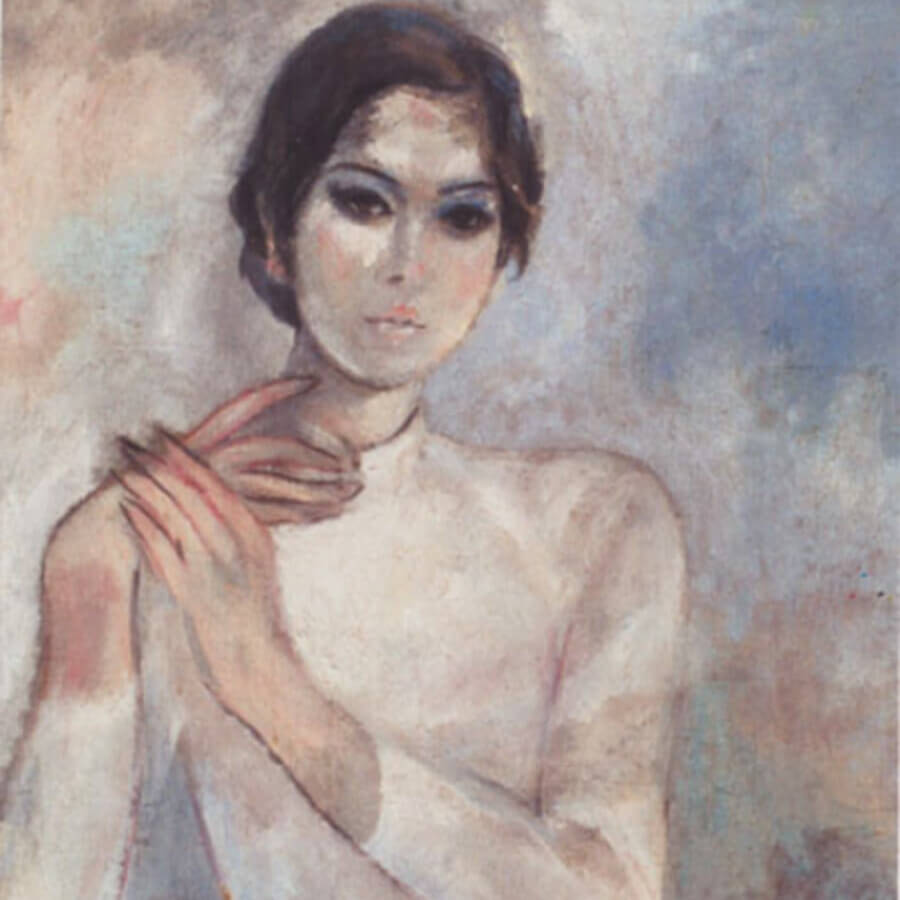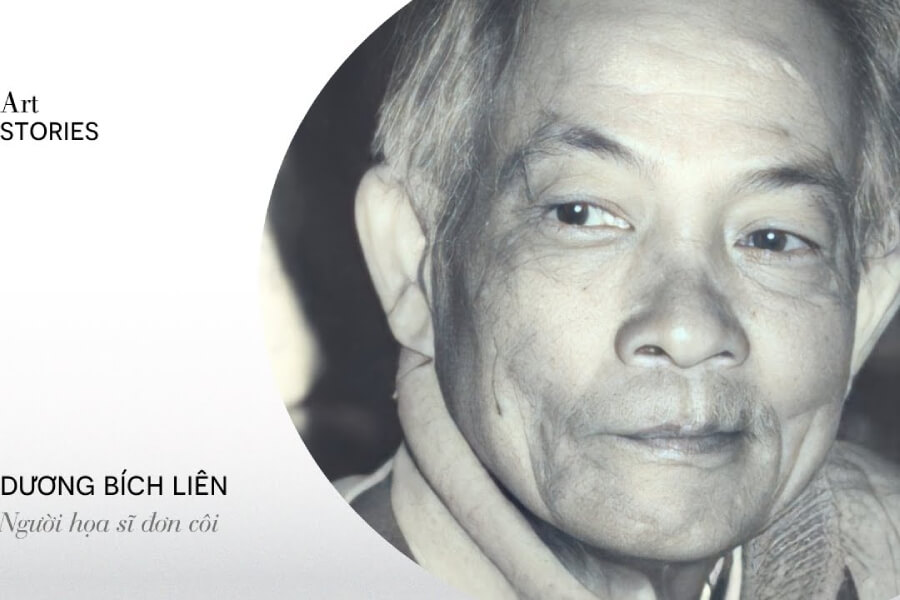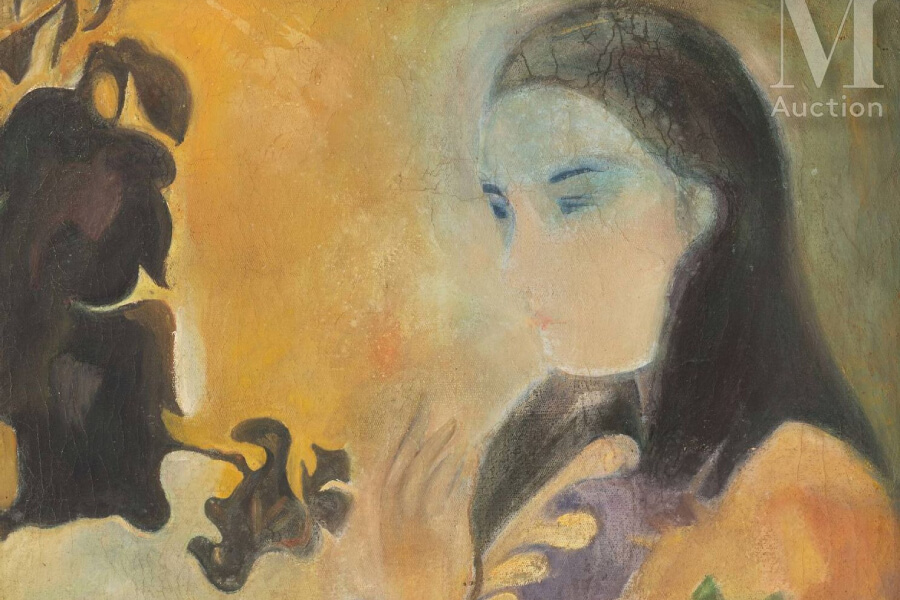Biography of Duong Bich Lien
Duong Bich Lien (1924-1988), was born in Ha Noi, Vietnam, in a family of intellectuals and mandarins. He was the second son (he had a brother and a sister and a brother). His hometown was in Phu Thi village, Khoai Chau district (now Phu Thi village, Me So commune, Van Giang district, Hung Yen province). His family in Khoai Chau has a tradition of studiousness.
Born in a wealthy and powerful family, until the age of 17, he became interested in art, and had the desire to give up the rich life to follow the dusty life.
Duong Bich Lien decided to enroll at Indochina Fine Arts College. From here, he started his painting career.
Duong Bich Lien’s Career
Duong Bich Lien was one of the last students of Indochina Fine Arts College. He studied at the Faculty of Painting, class XVIII (1944-1945). In 1946, Duong Bich Lien and many Hanoi intellectuals and artists participated in the resistance war against the French.
In 1949, he was one of the first painters to be admitted to the Party in the resistance area on the same day as artist Mai Van Hien and writer Tran Dang. In 1952, he was assigned to go to the war zone to live near and paint President Ho Chi Minh. The painting “Uncle Ho’s work in the Viet Bac” won the first prize at the 1980 National Fine Arts Exhibition and is now displayed at the Vietnam Fine Arts Museum. In 1954, Duong Bich Lien returned to take over the capital.
Duong Bich Lien’s most active period of composition was in the 60s and 70s, during these years, he was eager to send his works to the exhibition, but they were soon rejected, such as the paintings “Hao” and ” Uncle Ho talking to a National Defense Corp” . Particularly for the second picture, after being eliminated, people never saw the trace of this work again, and no one mentioned it anymore. The painting depicts a scene of Ho Chi Minh talking to a soldier in the Viet Bac War Zone. The reason the painting was disqualified was that the artist drew the soldier with his eyes closed while the leader was talking. But according to Duong Bich Lien’s explanation, only when people are in “extreme”, people often close their eyes. He wanted to explain that the soldier was ecstatic when he heard the leader’s instructions. But at that time, the artist’s interpretation did not convince the curators, because they thought that the leader was talking while the listeners were asleep, so this work was rejected as soon as they saw it. It is said that he was narcissistic and sad because of the estrangement of the mainstream from his works, so towards the end of his life he had almost no interest in composing, he fell into depression and almost gave up, people don’t see the artist draw any more excellent works.

In 1984, the State officially invited the four masters ” Nghiem, Lien, Sang, Phai” to organize a solo exhibition. Particularly Duong Bich Lien refused. Therefore, during his lifetime, he was an artist who did not have any exhibitions of his own. He sold all of his paintings to buy bottles of strong wine.
Duong Bich Lien diligently researched world art styles and trends. All materials are shown skillfully, uniquely, and transcendently by him, especially in the genres of lacquer, oil painting, striving and charcoal. He specializes in portraiture, very famous for the subject of girls. He was especially successful with his works on portraits of young women. People often say ” Phố Phái, gái Liên ” to mean that when looking at street paintings, one should see Bui Xuan Phai’s painting, and when looking at paintings of young women, Duong Bich Lien is the best painter. Duong Bich Lien devoted many compositions to the topic of young women with the most affection, passion and affection. Female characters have always been sources of inspiration, central images of aesthetic expressions and aesthetic ideals. His portraits of young women are very diverse, they are beautiful girls he recognizes and encounters in everyday life, carrying a simple, holy light.
In the group of four masters “Nghiem, Lien, Sang, Phai”, Duong Bich Lien is little known because he “voluntarily chose the silence of painting as himself”. He lived alone, crouching quietly, running away from himself and from his desires. Duong Bich Lien lives without a wife and children and few friends. His small house at 55 Ba Trieu was empty, with only a small bed covered with white sheets all year round, a hammock and a unique table and chair. During his lifetime, he had very few close friends except Bui Xuan Phai and Nguyen Sang. Critic Phan Cam Thuong wrote about Duong Bich Lien: “If he was contemporaneous with the leading painters of the Indochina School, he would have been more dreamy than them, because the dreamy quality occupied all of his art, although sometimes presented in a harsh manner. He does not cling to a scene like Bui Xuan Phai, does not indulge in fateful ideas like Nguyen Sang, but subtly stands outside what he paints as both a fact of reality and a fiction, dream scene”.
Duong Bich Lien is a talented and enthusiastic painter, he is very passionate about drawing, even in the days of the most destructive American war, he did not leave the easel. Duong Bich Lien’s painting career is a valuable asset of the Vietnamese Fine Arts.
Duong Bich Lien passed away at the house number 55A Ba Trieu because there was a document to change his house to Phan Ke An at 72 Tho Nhuom. In 2000, painter Duong Bich Lien was presented the Ho Chi Minh Prize for Literature and Art (phase II).
Duong Bich Lien has passed away, but his works remain with the years, the public and public opinion. Even though his life is still bitter, with many murky sorrows, there will be many more articles about him. He passed away peacefully, accepting, because he had fulfilled his life’s purpose: A painter quietly devoted his life to art, quietly created beautiful works for life, sent thoughts about the fate of an artist’s life. No nostalgia for the world, but the world is nostalgic for him, a talented painter, an artist who left a strong impression through his paintings that live forever with time.
Duong Bich Lien’s Highlighted Artworks
• Portrait of Bui Xuan Phai, painted with charcoal
• Hao–Moat
• Uncle Ho talking to a National Defense Corp…




